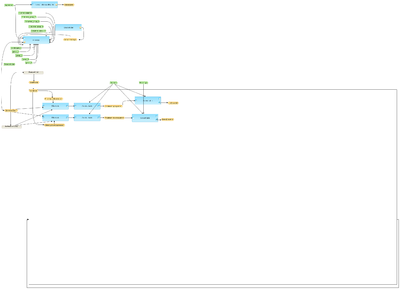Compute differentially expressed genes using EBarrays (workflow)
- Workflow title
- Compute differentially expressed genes using EBarrays
- Provider
- geneXplain GmbH
Workflow overview
Description
This workflow is designed to identify up- and down-regulated genes for several conditions by simultaneously applying EBarrays statistics. The workflow compares up to five conditions / groups in one run. As input, a table of probeset IDs with normalized values can be submitted. Such a table can be, for example, an output of a normalization procedure for multiple conditions. Please note that the EBarray method requires two or more replicates for each condition. Condition 1 is defined as control and one control is needed to run this workflow. You need to specify at least one more experimental condition. All possible comparisons between the input conditions are calculated in one workflow run. The first step of the workflow is a quality control of the input data with a density boxplot and a density plot. The primary result of the EBarray method is filtered by several conditions in parallel, applying the “Filter table” method to identify up- and down-regulated probeset IDs.
For up-regulated probes: LogFoldChange>0.5 and Sig ==1.
For down- regulated probes: LogFoldChange-0.5 and Sig ==1.
The tables with filtered up- and down-regulated genes are then annotated with gene description and gene symbol.
The output folder contains tables with up- and down-regulated genes for each comparison as well as the graphs of density boxplots and density plots. Besides the main output table containing differential expression estimates for each probe / gene, EBarrays provides two diagnostic plots named EBarrays CCV and EBarrays Marginal fit. These plots enable a judgment about whether the assumptions of the approach hold and how well the fitted model represents the data.
Reference: Kendziorski, C.M., Newton, M.A., Lan, H., Gould, M.N. (2003). On parametric empirical Bayes methods for comparing multiple groups using replicated gene expression profiles. Statistics in Medicine 22:3899-3914.
Parameters
- Input table
- Input table with all normalized CEL files
- Probe type
- Species
- Control group
- Enter control name without spaces
- Control_columns
- Select columns for control
- group_2
- Enter Condition 2 name without spaces
- Columns_group_2
- Select columns for condition 2
- group_3
- Enter Condition 3 name without spaces
- Columns_group_3
- Select columns for condition 3
- group_4
- Enter Condition 4 name without spaces
- Columns_group_4
- Select columns for condition 4
- group_5
- Enter Condition 5 name without spaces
- Columns_group_5
- Select columns for condition 5
- Results folder
